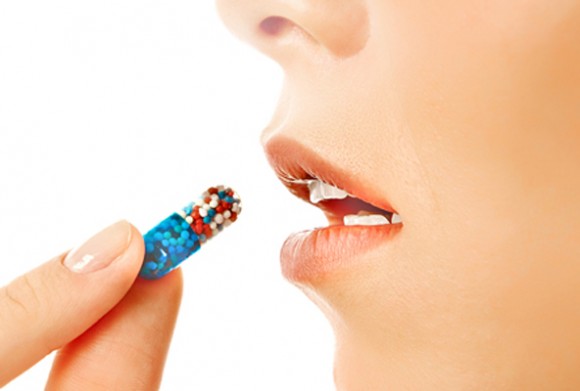Introduction to oral drug delivery:
Oral drug delivery refers to the administration of drugs through the mouth, where the drug is absorbe into the bloodstream through the gastrointestinal tract. This is the most common and convenient route of drug administration and is widely use in clinical practice. Oral drug delivery systems include tablets, capsules, suspensions, solutions, and powders.
Advantages of oral drug delivery:
- Ease of administration: Oral drugs are easy to administer and do not require the assistance of a healthcare professional. Patients can take the medication at home or on-the-go, improving patient compliance.
- Cost-effective: Oral drug delivery is a cost-effective method of drug administration as it eliminates the need for specialized equipment or trained personnel.
- Wide range of formulations: Oral drugs can be formulate into a wide range of dosage forms, including tablets, capsules, and liquids, making it easier for patients to take the medication.
- Targeted drug delivery: Some oral drug delivery systems can be designe to release the drug at a specific site in the gastrointestinal tract, providing targeted drug delivery.
Disadvantages of oral drug delivery:
- Variability in absorption: The absorption of oral drugs can be affecte by various factors, including food intake, pH levels, and the presence of other drugs, leading to variability in drug absorption.
- Gastrointestinal side effects: Some oral drugs can cause gastrointestinal side effects, such as nausea, vomiting, and diarrhea, which can affect patient compliance.
- First-pass metabolism: Some drugs undergo extensive metabolism in the liver, known as first-pass metabolism, which can reduce the bioavailability of the drug.
- Slow onset of action: Some drugs may have a slow onset of action when administered orally, as they have to pass through the gastrointestinal tract before entering the bloodstream.
Factors affecting oral drug absorption:
Several factors can affect the absorption of orally administered drugs. These include pH, solubility, permeability, particle size, and presence of food in the gastrointestinal tract. Other factors that may affect drug absorption include gastric emptying rate, intestinal transit time, and gastrointestinal enzymes.
Oral drug delivery technologies:
There are several oral drug delivery technologies that are designe to improve drug absorption and bioavailability. These technologies include immediate release formulations, sustained release formulations, enteric-coated formulations, and targeted drug delivery systems.
Immediate release formulations release the drug rapidly upon ingestion, providing a quick onset of action. Sustained release formulations release the drug over an extended period, maintaining therapeutic levels of the drug in the body. Enteric-coated formulations protect the drug from acidic environments in the stomach and release it in the more alkaline environment of the small intestine. Targeted drug delivery systems release the drug at a specific site in the gastrointestinal tract, providing targeted drug delivery.
Emerging trends in oral drug delivery:
Several emerging trends in oral drug delivery include the use of nanotechnology, 3D printing, and personalized medicine. Nanoparticle-based oral drug delivery systems can improve drug solubility, permeability, and stability. 3D printing can be use to fabricate customized drug delivery systems with precise dosages and release profiles. Personalized medicine involves tailoring drug therapy to an individual’s genetic makeup, improving treatment efficacy and reducing side effects.
Challenges in oral drug delivery:
There are several challenges in developing effective oral drug delivery systems, including maintaining drug stability, overcoming biological barriers, ensuring consistent drug release, and achieving targeted drug delivery. The gastrointestinal tract presents a complex environment that can affect drug absorption and bioavailability, and designing oral drug delivery systems that can overcome these challenges is a significant research challenge.
Future prospects:
The future of oral drug delivery is exciting, with several new technologies and approaches under development. These include the use of smart materials, biosensors, and biodegradable drug delivery systems. Smart materials can be designe to respond to changes in the environment, such as pH or temperature, to provide targeted drug delivery. Biosensors can monitor drug levels in the body in real-time, allowing for more precise drug dosing.
Biodegradable Oral Drug Delivery Systems
What are Biodegradable Oral Drug Delivery Systems?
Biodegradable oral drug delivery systems are drug delivery platforms that are designed to degrade over time, releasing the drug into the body. These systems can be made from biodegradable polymers, which break down into smaller components that can be eliminated from the body through normal metabolic pathways. Biodegradable drug delivery systems can be designe to release drugs in a controlled manner, providing sustained drug delivery over an extended period.
Conclusion:
Oral drug delivery is a widely used and convenient method of drug administration. However, there are several challenges that need to be overcome to develop effective oral drug delivery systems. Emerging trends such as nanotechnology, 3D printing, and personalized medicine offer exciting possibilities for improving drug delivery and enhancing patient outcomes. The future of oral drug delivery looks promising, with the potential for more targeted, efficient, and personalized drug therapies.
Read More:
What is Medication Management ? Benefits of Effective Medication Management – Naasery
Screw Compressors for Your Business & Types of Screw Compressors – Naasery









